In the shadow of Cannon Mountain, lies a resident of Franconia Notch State Park that is hidden away. It doesn’t get all the glitz and glory of the Flume Gorge. It doesn’t have an aerial tram leading up to its majestic beauty. It doesn’t even have a museum that talks about its past. But still, it’s an incredibly important part of the Notch. Of course, I’m talking about Boise Rock.
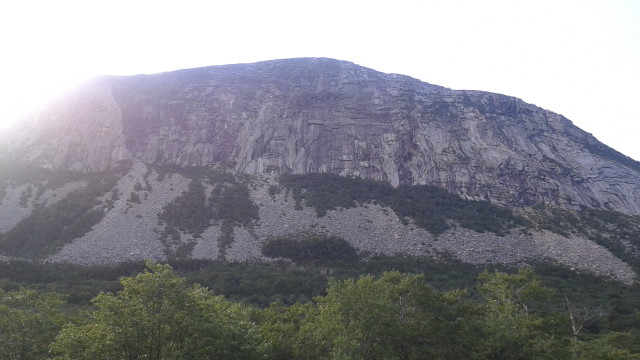
Boise Rock sits in the shadow of Cannon Cliffs. While not as well known as some other parts of the Notch, Boise Rock plays an important and interesting role in this region of New Hampshire’s local history. But good stories start at the beginning, so let’s start with the Rock’s origin story.
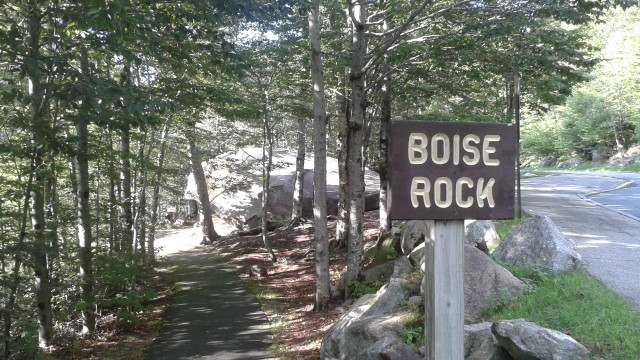
This story begins in the Ice Age, around 2-3 million years ago when the Earth’s climate was cooling rapidly. Because summers then were not warm enough to melt all the winter snow and ice, this snow and ice accumulated, forming mighty glaciers. These glaciers moved across the North American landscape, producing a variety of dramatic changes. For example, glaciers created the Great Lakes, now the largest source of fresh water in the world. Glaciers also moved huge amounts of rock from northern regions of North America farther south, forever changing vast swaths of the landscape and the makeup of the soil. One of these rocks that was transported South was Boise Rock, and its final resting place is in Franconia Notch.
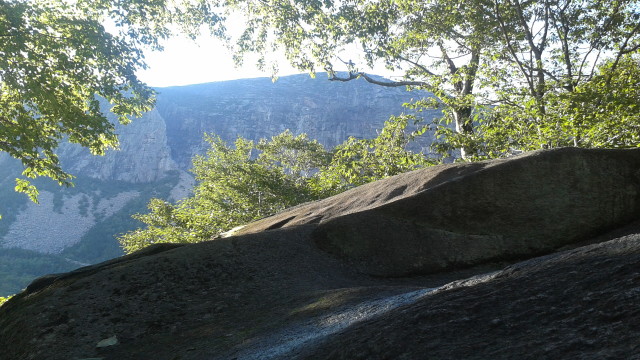
But Boise Rock’s claim to fame is not that it was moved hundreds of miles away from its original home, though that is certainly impressive. Boise Rock became famous thousands of years later, in the early 1800s. One winter night, Thomas Boise, a teamster from Woodstock, New Hampshire, was traveling through Franconia Notch with his horse. Suddenly, a fierce blizzard struck. In order to survive Thomas Boise took shelter under the rock that now bears his name. There, as the night wore on, the blizzard became so strong and so cold, that Boise had to resort to drastic measures to survive. Faced with no other choice in the midst of whiteout conditions, he made the difficult choice to kill his horse, skin it, wrapped himself in the hide so that he might stay warm enough to survive the night. The next morning, a search party was sent out to look for Boise. When they found him, he was miraculously still alive under the great rock but nearly frozen inside his horse’s hide. There was no doubt: his horse’s hide and the huge rock saved Thomas Boise’s life. This incident became famous as a courageous story of survival, and the giant boulder was given Boise’s name.
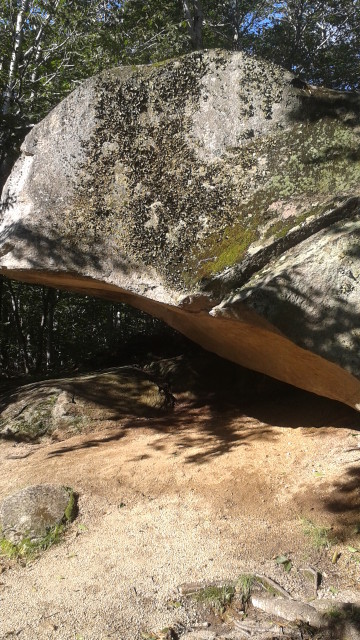
Even though it has been over 200 years since Boise Rock saved Thomas Boise’s life, the rock still has life depending on it (though not as dramatically as that one winter night!). If you take a close look at Boise Rock, you will see lichen and moss growing on it. Lichen is a symbiotic organism, which means that it is part algae and part fungus. It can live in a variety of locations: rocks, trees, mountain tops, deserts, even Antarctica. Moss, on the other hand, is all plant and likes to live in moist areas that are not overly sunny. Boise Rock is located in such a location that both organisms can survive there, and many colonies of lichen and moss call Boise Rock home. In this way, Boise Rock continues to be an important part of the local ecosystem, providing shelter for organisms small and, as Thomas Boise knew, large.
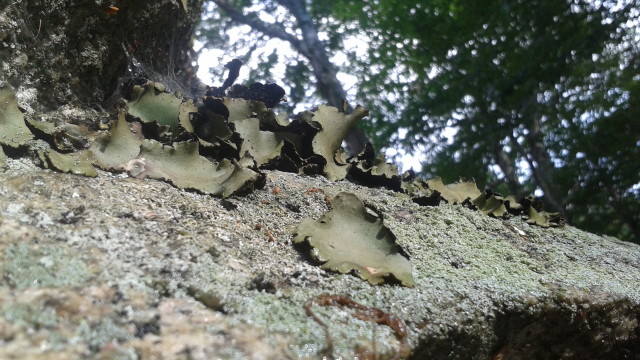
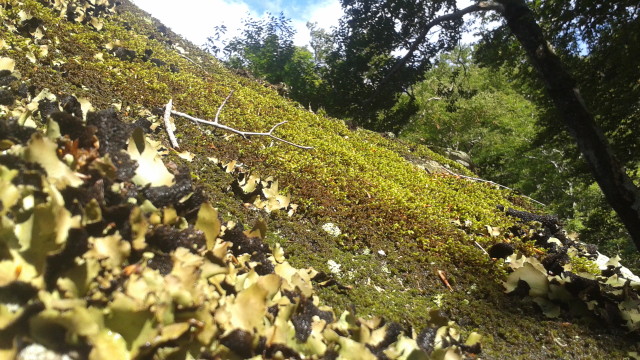
Even though it’s not as dramatic as rushing waters, spectacular overlooks, or steep cliffs, Boise Rock is still a great place visit for its impressive vista and fascinating, once-in-a-lifetime history. So next time you are in Franconia Notch State Park, come visit this hidden gem of the Notch and see what you can discover.
